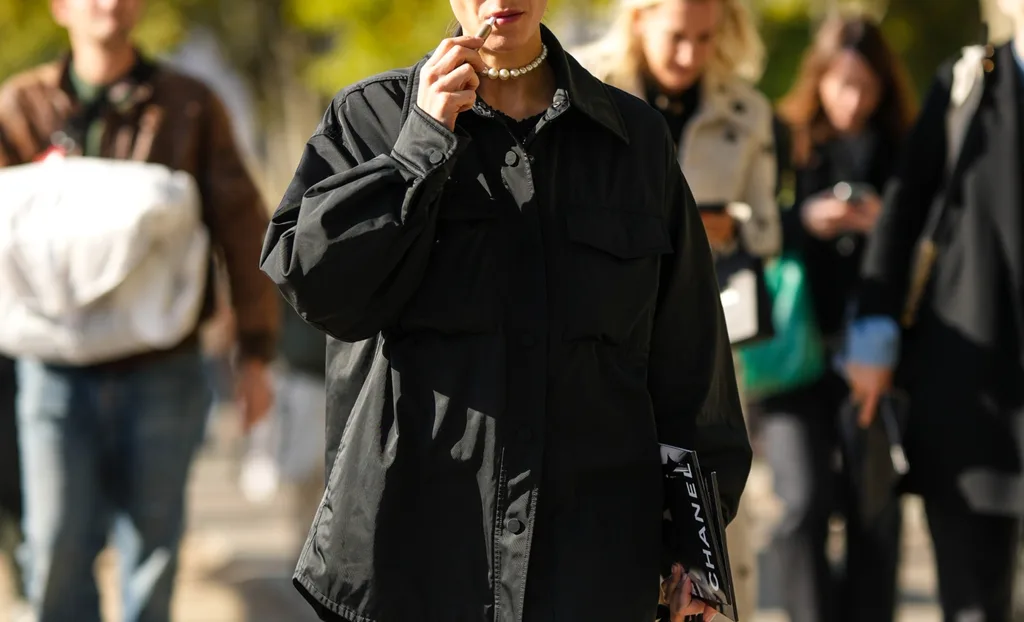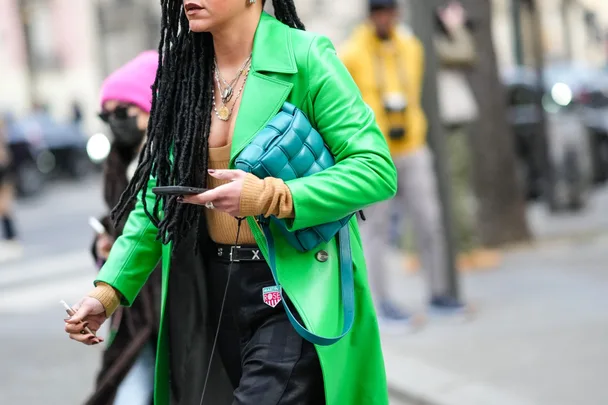Alison fumbled through her clutch looking for her keys after her law firm’s Christmas party in 2021.
Panic swept over her as she realised the keys were in her tote, which she had left in the taxi. Not only did it contain her keys, but also sensitive court documents and the expensive Tiffany & Co. cufflinks she’d bought her partner for Christmas. But it wasn’t any of those items that were top of mind. “The first thing I thought was, ‘Oh no, my vape is in there. I can’t get through tonight without it.’”
In that moment, the 32-year- old realised she had a problem. “I’m really embarrassed to admit it now, but I’m an asthmatic and was also suffering from long Covid. I took up vaping to quit smoking, but ended up doing both. I’m a smart girl—I don’t know how I got there.”
She continued to use vapes over the holidays and promised she’d quit in the New Year. Spoiler: she didn’t. In June last year, Alison was hospitalised with a life-threatening asthma attack after a night out vaping heavily. It was the wake-up call she needed.
Unlike Alison, Zoe, a 31-year-old marketing manager from Sydney, had never smoked in her life before she started vaping. “I came back from overseas, broke up with my partner, started going out to bars with my friends and began vaping when they did, using their vapes.”
One day Zoe bought a vape for herself to use on nights out, thinking it would make things easier. Looking back, she says, it was that moment that started her down a route she never thought she’d go.
“When I started a new job, I began to rely on vaping as a way to get a break from stressful situations,” she explains. “Now it has become something I do all day, every day whenever I have a second.” If she’s working from home, she admits she vapes almost constantly while sitting at her desk. When she first started vaping casually, one vape would last a few months. Now she’ll go though an entire vape in a week and a half.

And Zoe’s not alone. She’s one of the growing number of Australians who rely on vaping to get themselves through the day. In fact, vaping has grown a whopping 259 per cent in the past five years in Australia, especially among 16-24 year olds, and a recent survey estimated that more than a million Australian adults are vapers. For Zoe, though, there’s no comfort in those numbers. She’s been thinking of quitting for a while, yet so far hasn’t made the leap. It’s hard, she says, as her close friends and now her new partner all vape.
Vapes, also known as e-cigarettes, e-cigs and vape pens, are small battery-powered devices fitted with a cartridge containing a liquid, known as “juice”. They work by heating the liquid to create an aerosol, which users breathe in.
Although e-cigarettes can be traced back to the 1930s, it wasn’t until a Chinese pharmacist with a smoking problem created the first modern version in 2003. While it’s true that most vapes don’t contain tobacco, they do provide a hit of nicotine (anywhere between 0.3 –
5 per cent) alongside flavouring. Non-nicotine vapes are also available, but aren’t as popular, in a range of flavours (such as Ice Peach Pear and Blackcurrant Pudding).
While vaping is relatively new and research is still evolving, there have been numerous studies that suggest it could have some very serious health effects: for instance, cancer- causing agents such as formaldehyde, heavy metals such as tin and lead, and – according to the New South Wales Department of Health – the same harmful chemicals found in cleaning products, nail polish remover, weed killer and bug spray, have all been found in vaping liquid.
Some of these substances, namely flavouring chemicals such as diacetyl, have been linked to serious lung disease. A 2022 study in the US also found that vaping can “significantly impair the function of the body’s blood vessels”, increasing the risk of cardiovascular disease.

Not surprisingly, the Heart Foundation is concerned. In January this year, it issued a call for the government to take more comprehensive action against e-cigarette use. “As a nation, we are now at a ‘sliding doors’ moment where we risk allowing the health mistakes from tobacco cigarettes more than 60 years ago to be repeated for an entirely new generation,” said Heart Foundation CEO David Lloyd.
But with such a wide variety of devices and liquids on sale over the counter and online, regulation is challenging. A recent study conducted by Curtin University in collaboration with Lung Foundation Australia found that out of the 52 vapes they studied, 100 per cent were inaccurately labelled and contained chemicals with “unknown effects on respiratory health”, and 62 per cent contained chemicals that are considered toxic if inhaled repeatedly.
In October 2021, it became illegal to sell, buy or import vapes with nicotine in them. That is unless you have a valid permit or a prescription from a doctor. But experts including Dr Colin Mendelsohn, a leading specialist in smoking and vaping, have called the government regulations a “resounding policy failure”. “The regulations have failed to achieve their aims. In fact, they have had the opposite effect,” he said in a review of the policy. “A thriving black market has developed, supplying illegal, unregulated, high-nicotine disposable vapes.”
And, he adds, less than 12 per cent of nicotine vape users actually have a doctor’s referral. In addition, a 2021 study found that 21 per cent of vapes labelled “no nicotine” contained the substance anyway. With known and unknown health risks associated, the question remains: why are so many people vaping?
After heavy vaping led to her fainting several times in public, 33-year-old editor Alyx has quit. “I have looked in depth into the health risks and the reality is the jury is still out. Frankly, we just don’t have very good data because people haven’t been vaping for that long. The unknown health risks are a major factor in why I quit,” she tells marie claire, “but I mostly quit because being profoundly addicted to something is very inconvenient and unpleasant.”
Alyx also credits family planning as being a major instigator to quit. “When I turned 33, I was thinking about whether I was ready to have children yet and the first thought that popped into my head was, ‘If you wanted to have children, then you’d need to quit vaping.’ That’s when I realised that things had gone way too far and that my relationship with this chemical was not healthy.”
Quiting has been a struggle: the first GP she sought help from also vaped and she has relapsed several times. Even now, “To be honest, if a completely conclusive bulletproof study came out tomorrow saying vaping 100 per cent is not bad for you at all, I would potentially start again because I did find it so pleasurable.”
Despite declaring she could “quit anytime”, Bianca, 29, says she also finds it enjoyable. So much so that she even bedazzled a bridal vape for her wedding day. “When I had my bridal shower, there were so many photos with this bright pink vape in my hand and it looked disgusting!” she says. “So, I bought these little pearls and stuck them on my vape to make it look pretty for the wedding photos.”
Bianca, a journalist (and former smoker), blames her partner for her vaping. Having struggled to give up smoking, he began vaping while they were living together, which eventually led Bianca to try one out of curiosity. After a few puffs she thought, oh no, here we go! “Sometimes I’ll pick up [my vape] if I want a snack, as it tastes a bit sweet,” she explains. “Other times if I’m feeling a bit stressed or anxious the inhale relaxes me a little bit. But it’s mainly social. If I’m out, I’ll always have it in my hand.”

As for the health effects, they aren’t really a major concern for Bianca. For a start, she hasn’t seen much information about vaping and, more telling, she doesn’t really want to know. “I avoid looking them up because I know that I’m vaping quite a bit at the moment, so I don’t even want to know … which is bad,” she says.
This sentiment is shared by a fellow vaper, 25-year-old operations coordinator Georgia. She started vaping to relieve her stress during work events and, despite being “surrounded by smokers” (she hates the smell), she found vapes did the job. Originally from Western Australia, she gravitated to the cannabis-infused versions but now that she’s on the East Coast she makes do with nicotine. “I’m trying to avoid knowing the health effects,” she says. “I very much have the theory that something’s going to kill me eventually but until then I’m not all that bothered. Like, if it started becoming like a real epidemic, I would maybe take it seriously?”
This kind of avoidance is something psychologist Dr Marny Lishman says is likely to be denial, which is an “ego defence mechanism”, particularly when we know deep down that something is unhealthy. “The ego covers up the guilt and shame,” she explains. “And this can go hand in hand with purposely looking for info that confirms that vaping is OK (confirmation bias) or at least better than cigarettes (rationalising).”
These psychological tactics may be happening alongside an emerging addiction, with studies repeatedly showing that nicotine is highly addictive at almost any level. Even if you’re using a non-nicotine vape, you could still be addicted to the habit, says Lishman.
Some signs you might be, she says, could be thinking of vaping a lot of the time, interrupting other activities you usually enjoy because you have to vape, experiencing constant urges to vape and mood changes when you can’t.
This list sounds all too familiar to Zoe, who freely admits she’s addicted to her vaping habit. “I don’t even want to be doing it anymore,” she says. “I know that it’s bad and it’s costing me money but I’m definitely addicted. I tell myself I want to quit but then I’ll get to half a day or a day and I can really feel myself craving it.”
For the many vapers who want to quit, Lishman says there are several ways to do it. For the brave, she suggests quitting cold turkey. “However, make sure you have told the people around you to support you,” she adds. “And then make sure you distract yourself or change your routine so the brain gets tricked into not missing it.” Or, if you need a little extra support, add more beneficial health behaviours into your life first, such as a new fitness regimen, better nutrition, new hobbies or projects – anything to draw your attention away from your habit.
Having friends who support your actions can be vital, too. “One of my really good friends doesn’t vape or smoke,” says Zoe. “Whenever we’re vaping, she’ll always kind of throw it into conversation by saying, ‘Oh, I can’t believe you guys are still vaping! You need to quit.’ And we’re always saying, ‘We know. We knowww!’”

HOW TO GET HELP
See your GP or visit icanquit.com.au for information on how to quit and links to support groups. Quitline counsellors can provide tips and strategies, and help people plan their quit attempts based on their own needs and preferences. They can also help parents and carers with strategies on how to approach conversations with their children or loved ones.
HEALTH RISKS
While studies have found critical and life-threatening health implications, any long-term effects are currently unproven.
Short-term health effects may include:
-
Nausea, vomiting, mouth and airway irritation, chest pain and palpitations.
-
Increased odds of being diagnosed with asthma.
-
Weakened immunity.
-
Worsened stress, anxiety and susceptibility to depressive symptoms.
Long-term health effects may include:
-
Increased risk of lung disease.
-
Association with lung damage known as “e-cigarette or vaping associated lung injury” (EVALI).
-
Impacted brain development in young people affecting memory, attention and learning.
This story originally appeared in the March issue of marie claire Australia.










